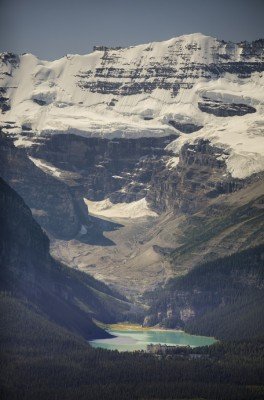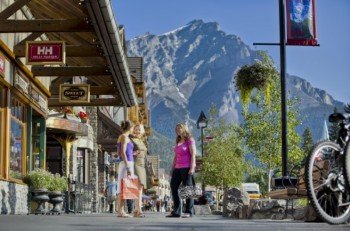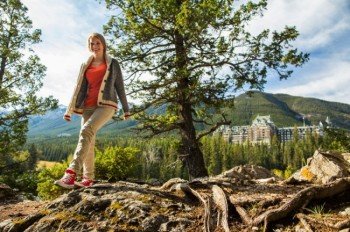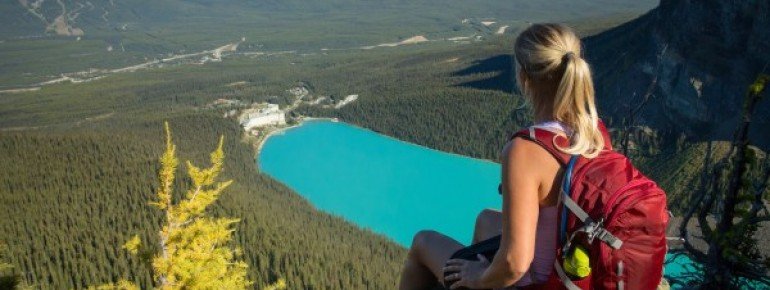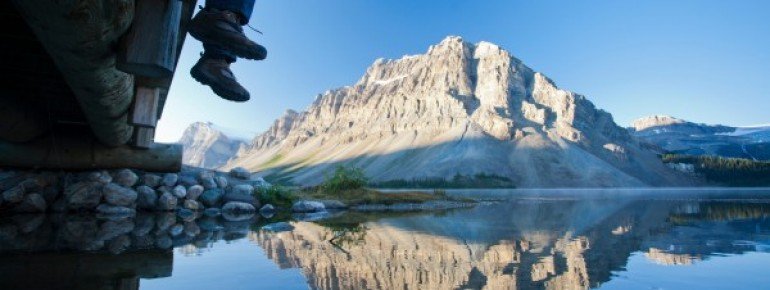For our special we take a leap across the Atlantic. The region around Banff Lake Louise in Alberta, Canada, offers one of the most beautiful nature parks in the world, but also a number of leisure facilities such as great hiking trails and bike trails. In winter, the mountains are covered in snow and an El Dorado for winter-sports enthusiasts. It's a year-round dream destination for active holiday-makers!
The Banff National Park in Alberta
The Banff Lake Louise region is located in the Canadian province Alberta, at the border to British Columbia. The capital of Alberta is Edmonton, but the bigger city is Calgary further north. The landscape of Alberta mainly consists of prairie, stretching all the way across to Saskatchewan in the East. Contrasting the landscape on the western side are the foothills of the Rocky Mountains. Beside the Banff National Park, there are numerous other national and province parks, among them the Jasper National Park further up from Banff, Wood-Buffalo-National Park in the North, and Elk-Island-National Park in the eastern part of the province.
Banff National Park was founded in 1885 and is therefore the oldest national park in Canada. It is also the third oldest national park worldwide and today counts as a UNESCO heritage. It shelters many large animal species such as moose, Canadian elks, black bears and grizzly bears, as well as wolves and coyotes. Over 250 bird species have been spotted here. The scenic highlights of the national park region are the 2.285 meter high Sulphur Mountain above Banff, the wild Johnston Canyon as well as, of course, the famous Lake Louise.
Banff and Lake Louise
The city Banff was founded in 1883 during the construction of the Canadian Pacific Railway, when a cave with a hot spring was discovered. It lies at a height of 1.399 meters, 58 kilometers south-east of Lake Louise, and is thereby the highest located city in Canada. From Banff, you can take a gondola up to Sulphur Mountain. Alongside its location in the national park as well as at the eastern side of the Rocky Mountains, the city is foremost known for the yearly Banff Mountain Film Festival as well as the Banff World Television Festival.
Lake Louise is a popular junction for tourists and locals, who want to do hiking or climbing tours, or canoe rides. Thanks to the stone dust which is flushed into the lake through the glacier melt water, the mountain lake shimmers in a beautiful turquoise-blue. Lake Louise flows into the Bow River, which runs through Banff National Park. It was named after princess Louise Caroline Alberta, the daughter of queen Victoria. If you are standing at the lake, you have a unique view over the 3.543 meter high Mount Temple, 2.983 meter high Mount Whyte as well as the 2.976 meter high Mount Niblock .
Travel tips for Banff Lake Louise
Traveling to Banff National Park requires you to dress flexibly. The weather is quite changeable, even in summer. It is best to dress in layers, so that you can take off garments, or quickly put on a raincoat if necessary. Because of the strong UV-exposure in the high alpine regions, sunglasses and sunscreen are obligatory all year round. The months June and July have the most sunshine hours and highest temperatures, ranging up to about 21 degrees celsius. In autumn, particularly the nights are very cool, while the afternoons can still be quite sunny. In January, you can expect temperatures of up to -7 degrees, in April of maximum 9 degrees celsius. During the winter months, the time in the Banff Lake Louise region is Mountain Standard Time (UTC -7h). In mid-March, it switched back to summer time (UTC -6h), until the beginning of November.
The journey to your destination is usually over Calgary airport. From there, you continue your travel with a rental car or shuttlebus to the 120 kilometer distant Banff, via Trans-Canada Highway 1. To get into the national park, you need the Banff National Park Pass. You pay a little entrance fee either in the information center or at the park entrances.





